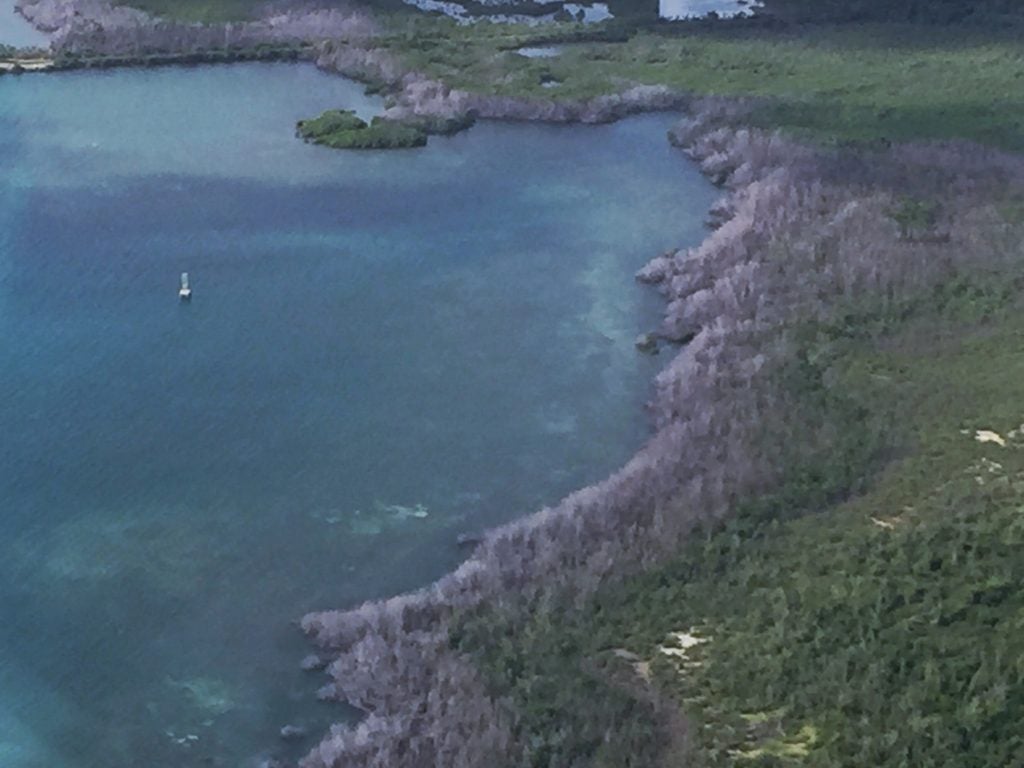Natural disasters are oftentimes felt most severely by human communities and ecosystems that are already vulnerable. This disparity is on clear display in Puerto Rico, where I am currently working.
On Sept. 20, 2017, just two weeks after Hurricane Irma skirted the islands of Puerto Rico, the eye of Hurricane Maria struck, with sustained winds of 155 miles per hour and gusts measured at 255 miles per hour by the U.S. Fish and Wildlife Service, until the weather station was torn away. Twelve hours of wind, rain and high seas left no part of Puerto Rico unscathed.
In Vieques, the island where I’m based, and other remote areas of Puerto Rico, the power grid was offline for more than five months – the longest blackout in U.S. history.
While recovery efforts were slower and more painful than they should have been, the Puerto Rico experience still offers some key lessons in resilience.
Hurricanes highlight inequities
Puerto Rico all too clearly demonstrates that hurricanes and disaster recovery exacerbate inequality.Puerto Rico all too clearly demonstrates that hurricanes and disaster recovery exacerbate inequality. Share on X
Individuals and businesses with more resources rebound faster, as evidenced by well-kept large homes, hotels and yachts. Nearby are empty lots where homes blew down, shells of buildings with boarded windows, and former businesses are still missing roofs. Even now, 18 months after the hurricanes hit, you still see FEMA’s blue tarps covering buildings – mostly in barrios composed of small homes.
One of many reasons for this dramatic difference is obscure land ownership, in part due to the islands’ history of land tenancy, squatter’s rights and/or property passing down informally through family generations. Consequently, securing government support for recovery is especially difficult.
And Puerto Rico’s experience is not unique. Economically vulnerable Americans are more likely to live in locations and in buildings more susceptible to storms, according to the Brookings Institute. And disaster assistance often does not go to those who need it most, according to a recent National Public Radio report.
To help more vulnerable communities bounce back from storms, we need to confront these institutional inequalities head-on, because everyone deserves access to recovery resources.
Interestingly, a similar dynamic is playing out in ecosystems, where natural systems also vary in their ability to recover from storms and require increased attention on building resilience to climate change.

Hurricane Maria defoliated the red mangroves fringing Puerto Rico’s lagoons. Today, bathtub rings of gray leafless trees ring these lagoons. Because the mangroves are thought to be part of what makes the bio bay glow, their recovery may be crucial to the bay’s long-term viability. While Mosquito Bay’s red mangroves will likely re-establish over time, efforts are now underway to raise funds to plant mangrove seedlings to speed their re-establishment in part to stabilize the lagoon’s peat soils.
A brilliant bio bay went dark, but shines again
Glowing year-round, Vieques’ Mosquito Bay is an ecotourism engine for the island. The irreplaceable and magical bioluminescent bay benefits from a unique public-private partnership between Puerto Rico’s Departamento de Recursos Naturales y Ambientales (Department of Natural Resources and Environment) and the Vieques Conservation and Historic Trust. Consequently, this “bio bay” is relatively well cared for. Protective buffers limit building and runoff, access is controlled, and visitors are no longer allowed to swim in its waters.
Thanks to this careful management, the bio bay has now become a local metaphor for resilience.
After Hurricane Maria, the bay initially went dark, just like the island. But 18 months later, it is glowing again. Its bioluminescent dinoflagellates have returned in numbers exceeding pre-storm levels, and the lagoon’s recovery is helping to fuel the island’s economic recovery. Bio bay tours are back in full swing.
The success story of the bio bay’s recovery shows how healthy ecosystems have more natural resilience, and how well-managed areas can be aided to recover faster. Conversely, more vulnerable species or ecosystems – in which populations are low and/or stressed by overhunting, pollution, invasive species or habitat loss – are less likely to bounce back after storms and other impacts, which can pose existential threats.
We need a concerted effort to build climate resilience, fast
In a world being rapidly altered by climate change, we need to ensure that all communities and ecosystems are protected, restored and nurtured in their own way.
There is no one-to-one ratio of hazard to damage, nor is there a one-to-one ratio of damage to impact. Storms disproportionately impact vulnerable people and ecosystems more. We must do more to be better prepared for the impacts of climate change – from rising seas and more intense storms to longer periods of drought.
Adapting to the new realities of climate change will require a concerted effort to apply lessons learned quickly, before the next disaster hits.









